| Revision as of 17:44, 11 May 2017 edit2402:4000:bbfe:e3b5:6d3f:9b20:2e97:6d84 (talk) →Air Force Headquarters← Previous edit | Revision as of 21:13, 23 May 2017 edit undoInternetArchiveBot (talk | contribs)Bots, Pending changes reviewers5,387,971 edits Rescuing 9 sources and tagging 0 as dead. #IABot (v1.3.2.2) (Josve05a)Next edit → | ||
| Line 69: | Line 69: | ||
| ===Early days=== | ===Early days=== | ||
| Early administration and training was carried out by RAF officers and other personnel, who were seconded to the RCyAF. | Early administration and training was carried out by RAF officers and other personnel, who were seconded to the RCyAF. | ||
| The first aircraft of the RCyAF were ]s used as basic trainers. These were followed by ] T.Mk.2s and ] Mk.1s for advanced training of pilots and aircrew along with ]s and ]s for transport use, all provided by the British. By 1955 the RCyAF was operating two flying squadrons based at ]. The first helicopter type to be added to the service was the ]. These were supplemented in the 1960s with various other aircraft, most notably ] ] helicopters and a ] ] given by ]. The RAF departed Ceylon in the late 1950s: The closure of British bases in Ceylon in 1956 saw the air force take over former RAF bases; ] and ] became RCyAF operational stations while ancillary functions were carried out at ] and Ekala. The RAF headquarters, Air HQ Ceylon, was disbanded on 1 November 1957.<ref>{{cite web|url=http://www.rafweb.org/Cmd_O3.htm|title=Commands - India/FE - Including Space Commands and MMO Information.htm|publisher=|accessdate=6 February 2015}}</ref> | The first aircraft of the RCyAF were ]s used as basic trainers. These were followed by ] T.Mk.2s and ] Mk.1s for advanced training of pilots and aircrew along with ]s and ]s for transport use, all provided by the British. By 1955 the RCyAF was operating two flying squadrons based at ]. The first helicopter type to be added to the service was the ]. These were supplemented in the 1960s with various other aircraft, most notably ] ] helicopters and a ] ] given by ]. The RAF departed Ceylon in the late 1950s: The closure of British bases in Ceylon in 1956 saw the air force take over former RAF bases; ] and ] became RCyAF operational stations while ancillary functions were carried out at ] and Ekala. The RAF headquarters, Air HQ Ceylon, was disbanded on 1 November 1957.<ref>{{cite web|url=http://www.rafweb.org/Cmd_O3.htm |title=Commands - India/FE - Including Space Commands and MMO Information.htm |publisher= |accessdate=6 February 2015 |deadurl=yes |archiveurl=https://web.archive.org/web/20080806113118/http://www.rafweb.org/Cmd_O3.htm |archivedate=6 August 2008 |df= }}</ref> | ||
| In 1959 ] ] were acquired. However, the RCyAF did not put them into operational use and soon replaced them with five ] obtained from the British, which were formed into the Jet Squadron. By 1970 these were in storage. | In 1959 ] ] were acquired. However, the RCyAF did not put them into operational use and soon replaced them with five ] obtained from the British, which were formed into the Jet Squadron. By 1970 these were in storage. | ||
| The Royal Ceylon Air Force first went into combat in 1971 when the ] ] launched an ] on April 5. The Ceylon Armed Forces were caught off guard; ] island-wide and the RCyAF base at Ekala were attacked in the initial wave. Responding rapidly the RCyAF deployed its limited aircraft, at first to resupply besieged police stations and military outposts and patrol around major cities. The Jet Provosts were taken out of storage and put into service within three days, carrying out attacks on insurgents.<ref></ref> During this insurgency the left-leaning ] government turned to the ] for more sophisticated weaponry, and received five ]F fighter bombers and a ] trainer, as well as two ] helicopters meant for ] and ]. The RAF's heavy transports also flew in six ]G helicopters purchased from the United States, which were put into combat as soon as possible after only five days of pilot training.<ref></ref> Air Force personnel joined in ground operations, and when the insurgents surrendered after about a month's fighting the RCyAF was in charge of three of the many rehabilitation camps setup for insurgents. | The Royal Ceylon Air Force first went into combat in 1971 when the ] ] launched an ] on April 5. The Ceylon Armed Forces were caught off guard; ] island-wide and the RCyAF base at Ekala were attacked in the initial wave. Responding rapidly the RCyAF deployed its limited aircraft, at first to resupply besieged police stations and military outposts and patrol around major cities. The Jet Provosts were taken out of storage and put into service within three days, carrying out attacks on insurgents.<ref> {{webarchive|url=https://web.archive.org/web/20090209191409/http://www.airforce.lk/hist/hist1/h2c1p2.htm |date=2009-02-09 }}</ref> During this insurgency the left-leaning ] government turned to the ] for more sophisticated weaponry, and received five ]F fighter bombers and a ] trainer, as well as two ] helicopters meant for ] and ]. The RAF's heavy transports also flew in six ]G helicopters purchased from the United States, which were put into combat as soon as possible after only five days of pilot training.<ref> {{webarchive|url=https://web.archive.org/web/20090208194851/http://www.airforce.lk/hist/hist1/h2c1p3.htm |date=2009-02-08 }}</ref> Air Force personnel joined in ground operations, and when the insurgents surrendered after about a month's fighting the RCyAF was in charge of three of the many rehabilitation camps setup for insurgents. | ||
| Because of a shortage of funds for military expenditure in the wake of the 1971 uprising, the No. 4 Helicopter Squadron began operating commercial transport services for foreign tourists under the name of ].<ref name="Helitours"></ref> In 1987 the air force had a total strength of 3,700 personnel, including active reserves. The force had grown gradually during its early years, reaching a little over 1,000 officers and recruits in the 1960s. On March 31, 1976 the SLAF was awarded the ]. That same year SLAF detachments, which later became SLAF stations, were established at Wirawila, Vavuniya and Minneriya. | Because of a shortage of funds for military expenditure in the wake of the 1971 uprising, the No. 4 Helicopter Squadron began operating commercial transport services for foreign tourists under the name of ].<ref name="Helitours"> {{webarchive|url=https://web.archive.org/web/20080118184522/http://www.airforce.lk/hist/hist1/h2c2p2.htm |date=2008-01-18 }}</ref> In 1987 the air force had a total strength of 3,700 personnel, including active reserves. The force had grown gradually during its early years, reaching a little over 1,000 officers and recruits in the 1960s. On March 31, 1976 the SLAF was awarded the ]. That same year SLAF detachments, which later became SLAF stations, were established at Wirawila, Vavuniya and Minneriya. | ||
| With the closure of ] in 1978, its ] transport aircraft was taken over by the SLAF. By the early 1980s the Provosts and all of the Soviet aircraft had been taken out of active service and placed in long-term storage, leaving the air force without any fighter/bomber capability. | With the closure of ] in 1978, its ] transport aircraft was taken over by the SLAF. By the early 1980s the Provosts and all of the Soviet aircraft had been taken out of active service and placed in long-term storage, leaving the air force without any fighter/bomber capability. | ||
| Line 105: | Line 105: | ||
| Since the start of the civil war the SLAF used its combat aircraft in a ground-attack role to attack LTTE targets in the then LTTE-controlled areas in the northern and eastern parts of the island. Following confirmation that the LTTE was using several light weight aircraft in 2006, the SLAF expanded its ] capabilities which had been neglected for years. Extensive air defense ] network was established and ground based air defense strengthened. ] of the LTTE light aircraft were developed using both fixed wing and rotary wing aircraft until dedicated interceptors were acquired. | Since the start of the civil war the SLAF used its combat aircraft in a ground-attack role to attack LTTE targets in the then LTTE-controlled areas in the northern and eastern parts of the island. Following confirmation that the LTTE was using several light weight aircraft in 2006, the SLAF expanded its ] capabilities which had been neglected for years. Extensive air defense ] network was established and ground based air defense strengthened. ] of the LTTE light aircraft were developed using both fixed wing and rotary wing aircraft until dedicated interceptors were acquired. | ||
| During the 2007–2009 the LTTE launched several attacks using light aircraft on Colombo, SLAF Katunayake and several other locations with superficial damage. In the early hours of October 22, 2007 a ] on SLAF Anuradhapura at Saliyapura, which was supported briefly by its air wing, resulted in the destruction of eight aircraft with several others damaged.<ref></ref> The attack only affected the SLAF's training element. Early in 2008 the air force received six F-7Gs, these are primarily used as interceptors and are attached to No.5 Jet Squadron.<ref>{{cite web|url=http://defencenet.blogspot.com/2008/02/f-7g-fighters-to-counter-tiger-air.html|title=DefenceNet: Defence News from Sri Lanka|author=DefenceNet|publisher=|accessdate=6 February 2015}}</ref> | During the 2007–2009 the LTTE launched several attacks using light aircraft on Colombo, SLAF Katunayake and several other locations with superficial damage. In the early hours of October 22, 2007 a ] on SLAF Anuradhapura at Saliyapura, which was supported briefly by its air wing, resulted in the destruction of eight aircraft with several others damaged.<ref> {{webarchive|url=https://web.archive.org/web/20141012021049/http://www.defence.lk/new.asp?fname=20071024_07 |date=2014-10-12 }}</ref> The attack only affected the SLAF's training element. Early in 2008 the air force received six F-7Gs, these are primarily used as interceptors and are attached to No.5 Jet Squadron.<ref>{{cite web|url=http://defencenet.blogspot.com/2008/02/f-7g-fighters-to-counter-tiger-air.html|title=DefenceNet: Defence News from Sri Lanka|author=DefenceNet|publisher=|accessdate=6 February 2015}}</ref> | ||
| In October 2008 the air force claimed its first air-to-air kill, when it reported that one of its [[Chengdu J-7| | In October 2008 the air force claimed its first air-to-air kill, when it reported that one of its [[Chengdu J-7| | ||
| Line 346: | Line 346: | ||
| However, with the end of the civil war, the SLAF as changed its priorities and has set a long-term goal of modernizing its aircraft and developing its ] capability. It has developed its own ] program to develop ] and plan on replacing its fighter aircraft.<ref>{{cite web|url=http://www.lankajournal.com/2011/02/sri-lanka-air-force-develops-own-uav/|title=Account Suspended|publisher=|accessdate=6 February 2015}}</ref> There have been claims that SLAF is looking at ] as a replacement for its Kfirs and MiG-27s.<ref>Iftikhar A. Khan, "PAF gets six JF-17 Thunder aircraft", , published 15 March 2008, URL to archive: http://archives.dawn.com/2008/03/15/top8.htm Retrieved 16 February 2011</ref><ref name="defenseindustrydaily.com article">{{citation |title=Stuck in Sichuan: Pakistani JF-17 Program Grounded? No |publisher=Defense Industry Daily |origyear= January 2007 |date=9 March 2009 |url= http://www.defenseindustrydaily.com/stuck-in-sichuan-pakistani-jf17-program-grounded-02984/ |accessdate= July 2009}}</ref> | However, with the end of the civil war, the SLAF as changed its priorities and has set a long-term goal of modernizing its aircraft and developing its ] capability. It has developed its own ] program to develop ] and plan on replacing its fighter aircraft.<ref>{{cite web|url=http://www.lankajournal.com/2011/02/sri-lanka-air-force-develops-own-uav/|title=Account Suspended|publisher=|accessdate=6 February 2015}}</ref> There have been claims that SLAF is looking at ] as a replacement for its Kfirs and MiG-27s.<ref>Iftikhar A. Khan, "PAF gets six JF-17 Thunder aircraft", , published 15 March 2008, URL to archive: http://archives.dawn.com/2008/03/15/top8.htm Retrieved 16 February 2011</ref><ref name="defenseindustrydaily.com article">{{citation |title=Stuck in Sichuan: Pakistani JF-17 Program Grounded? No |publisher=Defense Industry Daily |origyear= January 2007 |date=9 March 2009 |url= http://www.defenseindustrydaily.com/stuck-in-sichuan-pakistani-jf17-program-grounded-02984/ |accessdate= July 2009}}</ref> | ||
| In 2013 Pakistan offered the JF-17 aircraft to several countries including Sri Lanka<ref>{{cite web|url=http://www.dailymirror.lk/top-story/37722-pakistan-to-sell-jf-17-fighter-jets-to-sl-report.html|title=Pakistan to sell JF-17 fighter jets to SL-report ::: Dailymirror.lk ::: Breaking News|publisher=|accessdate=6 February 2015}}</ref> Unconfirmed reports in June 2015 state that ] placed an order for a squadron of ].In October 2015 several reports claimed that India offered Sri Lanka its ] aircraft against the Pakistani JF-17.<ref>{{Cite web|title = India Offers Tejas LCA Against Pakistani JF-17 Fighter For Sri Lankan MiG Replacement|url = http://www.defenseworld.net/news/14396/India_Offers_Tejas_LCA_Against_Pakistani_JF_17_Fighter_For_Sri_Lankan_MiG_Replacement#.Vi3mGdIrK1t|website = www.defenseworld.net|accessdate = 2015-10-26}}</ref> On January 5, 2016, several newspapers reported that an agreement was signed with Pakistan for the supply of 8 JF-17s<ref>{{Cite web|title = Pakistan to sell 8 JF-17 Thunder fighter jets to Sri Lanka, inks eight agreements - The Economic Times|url = http://economictimes.indiatimes.com/news/defence/pakistan-to-sell-8-jf-17-thunder-fighter-jets-to-sri-lanka-inks-eight-agreements/articleshow/50457533.cms|website = The Economic Times|accessdate = 2016-01-05}}</ref> to be delivered by end of 2017.<ref>{{Cite web|title = India criticises Sri Lanka for purchase of JF-17s from Pakistan - Pakistan {{!}} Dunya News|url = http://dunyanews.tv/en/Pakistan/316176-India-criticises-Sri-Lanka-for-purchase-of-JF17s-|website = dunyanews.tv|accessdate = 2016-01-05}}</ref> This was followed by a clarification by the Sri Lankan government that no such deal had been discussed or signed and dismissed the news reports as mere speculation. | In 2013 Pakistan offered the JF-17 aircraft to several countries including Sri Lanka<ref>{{cite web|url=http://www.dailymirror.lk/top-story/37722-pakistan-to-sell-jf-17-fighter-jets-to-sl-report.html |title=Pakistan to sell JF-17 fighter jets to SL-report ::: Dailymirror.lk ::: Breaking News |publisher= |accessdate=6 February 2015 |deadurl=yes |archiveurl=http://www.webcitation.org/6Qgh7Yq9H?url=http://www.dailymirror.lk/top-story/37722-pakistan-to-sell-jf-17-fighter-jets-to-sl-report.html |archivedate=29 June 2014 |df= }}</ref> Unconfirmed reports in June 2015 state that ] placed an order for a squadron of ].In October 2015 several reports claimed that India offered Sri Lanka its ] aircraft against the Pakistani JF-17.<ref>{{Cite web|title = India Offers Tejas LCA Against Pakistani JF-17 Fighter For Sri Lankan MiG Replacement|url = http://www.defenseworld.net/news/14396/India_Offers_Tejas_LCA_Against_Pakistani_JF_17_Fighter_For_Sri_Lankan_MiG_Replacement#.Vi3mGdIrK1t|website = www.defenseworld.net|accessdate = 2015-10-26}}</ref> On January 5, 2016, several newspapers reported that an agreement was signed with Pakistan for the supply of 8 JF-17s<ref>{{Cite web|title = Pakistan to sell 8 JF-17 Thunder fighter jets to Sri Lanka, inks eight agreements - The Economic Times|url = http://economictimes.indiatimes.com/news/defence/pakistan-to-sell-8-jf-17-thunder-fighter-jets-to-sri-lanka-inks-eight-agreements/articleshow/50457533.cms|website = The Economic Times|accessdate = 2016-01-05}}</ref> to be delivered by end of 2017.<ref>{{Cite web|title = India criticises Sri Lanka for purchase of JF-17s from Pakistan - Pakistan {{!}} Dunya News|url = http://dunyanews.tv/en/Pakistan/316176-India-criticises-Sri-Lanka-for-purchase-of-JF17s-|website = dunyanews.tv|accessdate = 2016-01-05}}</ref> This was followed by a clarification by the Sri Lankan government that no such deal had been discussed or signed and dismissed the news reports as mere speculation. | ||
| In mid 2016 Sri Lankan Government gives green light to a programme to procure multirole combat aircraft. The programme, featuring the acquisition of between 8-12 aircraft, will be pursued through an government-government basic agreement.<ref>{{Cite web|title = Sri Lanka prepares to launch combat aircraft procurement program|url = http://www.janes.com/article/62956/sri-lanka-prepares-to-launch-combat-aircraft-procurement-programme|website = http://www.janes.com|accessdate = 2017-02-09}}</ref> In December 2016 Sri Lanka Prime minister ] said Sri Lanka received offers from ], ], ] and ] and they are still in progress to take final decision.<ref>{{Cite web|title = Sri Lanka to buy Chinese Xian Y20 military-cum-civil transport planes |url = http://www.newindianexpress.com/world/2016/dec/04/sri-lanka-to-buy-chinese-xian-y20-military-cum-civil-transport-planes-1545590.html|website = http://www.newindianexpress.com|accessdate = 2017-02-09}}</ref> | In mid 2016 Sri Lankan Government gives green light to a programme to procure multirole combat aircraft. The programme, featuring the acquisition of between 8-12 aircraft, will be pursued through an government-government basic agreement.<ref>{{Cite web|title = Sri Lanka prepares to launch combat aircraft procurement program|url = http://www.janes.com/article/62956/sri-lanka-prepares-to-launch-combat-aircraft-procurement-programme|website = http://www.janes.com|accessdate = 2017-02-09}}</ref> In December 2016 Sri Lanka Prime minister ] said Sri Lanka received offers from ], ], ] and ] and they are still in progress to take final decision.<ref>{{Cite web|title = Sri Lanka to buy Chinese Xian Y20 military-cum-civil transport planes |url = http://www.newindianexpress.com/world/2016/dec/04/sri-lanka-to-buy-chinese-xian-y20-military-cum-civil-transport-planes-1545590.html|website = http://www.newindianexpress.com|accessdate = 2017-02-09}}</ref> | ||
| Line 360: | Line 360: | ||
| ===Foreign=== | ===Foreign=== | ||
| * Since 2004 the air force personal have been attached to Sri Lankan contingent to the ] MINUSTH, minustah.un.org.<ref></ref> | * Since 2004 the air force personal have been attached to Sri Lankan contingent to the ] MINUSTH, minustah.un.org.<ref> {{webarchive|url=https://web.archive.org/web/20070815112334/http://www.un.org/Depts/dpko/missions/minustah/facts.html |date=2007-08-15 }}</ref> | ||
| * The Sri Lanka Air Force deployed an aviation unit under the ], with a flight of three Mi-17 helicopters from the No. 6 Helicopter Squadron along with 122 personnel consisting pilots, engineers and other supporting staff. | * The Sri Lanka Air Force deployed an aviation unit under the ], with a flight of three Mi-17 helicopters from the No. 6 Helicopter Squadron along with 122 personnel consisting pilots, engineers and other supporting staff. | ||
| * Sri Lanka Air Force deployed its second aviation unit under ]. The deployment consists fleet of three ] Helicopters from the SLAF along with 104 personnel consisting pilots, engineers and other supporting staff.<ref>{{cite web|url=http://www.hirunews.lk/110926/fleet-air-force-helicopters-to-sudan|title=Hiru News|publisher=|accessdate=7 June 2015}}</ref> | * Sri Lanka Air Force deployed its second aviation unit under ]. The deployment consists fleet of three ] Helicopters from the SLAF along with 104 personnel consisting pilots, engineers and other supporting staff.<ref>{{cite web|url=http://www.hirunews.lk/110926/fleet-air-force-helicopters-to-sudan|title=Hiru News|publisher=|accessdate=7 June 2015}}</ref> | ||
| Line 425: | Line 425: | ||
| Over 23,790 Sri Lankan armed forces personnel were killed since beginning of the civil war in 1981 to its end in 2009, this includes ]s killed in active duty.<ref>{{cite news|url=http://news.smh.com.au/breaking-news-world/victorys-price-6200-sri-lankan-troops-20090522-bi4f.html |title=Victory's price: 6,200 Sri Lankan troops |publisher=News.smh.com.au |date=22 May 2009 |accessdate=30 May 2009}}</ref> 659 service personnel were killed due to the second JVP insurrection from 1987 to 1990. 53 service personnel were killed and 323 were wounded in the first JVP insurrection from 1971 to 1972.<ref>{{cite web|url=http://sundaytimes.lk/010408/spec.html|title=The Sunday Times - Special Assignment|publisher=|accessdate=6 February 2015}}</ref> Notable fallen members includes; | Over 23,790 Sri Lankan armed forces personnel were killed since beginning of the civil war in 1981 to its end in 2009, this includes ]s killed in active duty.<ref>{{cite news|url=http://news.smh.com.au/breaking-news-world/victorys-price-6200-sri-lankan-troops-20090522-bi4f.html |title=Victory's price: 6,200 Sri Lankan troops |publisher=News.smh.com.au |date=22 May 2009 |accessdate=30 May 2009}}</ref> 659 service personnel were killed due to the second JVP insurrection from 1987 to 1990. 53 service personnel were killed and 323 were wounded in the first JVP insurrection from 1971 to 1972.<ref>{{cite web|url=http://sundaytimes.lk/010408/spec.html|title=The Sunday Times - Special Assignment|publisher=|accessdate=6 February 2015}}</ref> Notable fallen members includes; | ||
| * ] ] {{KIA}} – Commanding Officer, ]<ref name='Spice'></ref> | * ] ] {{KIA}} – Commanding Officer, ]<ref name='Spice'> {{webarchive|url=https://web.archive.org/web/20070930023555/http://www.dailynews.lk/2007/01/20/spice01.asp |date=2007-09-30 }}</ref> | ||
| * ] D. S. Wickramasinghe {{KIA}} – Senior Staff Officer, Directorate of Aeronautical Engineering | * ] D. S. Wickramasinghe {{KIA}} – Senior Staff Officer, Directorate of Aeronautical Engineering | ||
| * ] Roger Weerasinghe {{KIA}} – Zonal Commander, Northern Zone | * ] Roger Weerasinghe {{KIA}} – Zonal Commander, Northern Zone | ||
| Line 471: | Line 471: | ||
| * | * | ||
| * | * | ||
| * | * | ||
| * | * | ||
| * | * | ||
Revision as of 21:13, 23 May 2017



The Sri Lanka Air Force (SLAF) (Template:Lang-si Sri Lanka Guwan Hamudawa) (Template:Lang-ta Ilaṅkai Vimāṉappaṭai) is the air arm and the youngest of the Sri Lanka Armed Forces. It was founded in 1951 as the Royal Ceylon Air Force (RCyAF) with the assistance of the Royal Air Force (RAF). The SLAF played a major role throughout the Sri Lankan Civil War. The SLAF operates more than 160 aircraft and has a projected trained strength of 27,400 airmen and 1,300 officers, who are from both regular and reserve service. The Sri Lanka Air Force has expanded to specialise mainly in providing air-support to ground forces, troop landing, and carrying out air strikes on rebel-held areas in the Northern and Eastern theatres, but is also capable of high- and low-level air defence.
The Commander of the Air Force is the professional head of the Sri Lanka Air Force.
Mission statement
The mission statement of the Sri Lanka Air Force is
To achieve professional excellence in rapid mobility and precision engagement by developing core capabilities based on technological superiority, to ensure operational readiness and success in exploiting the competent human resources and equipment of the Sri Lanka Air Force
The Vision of the Sri Lanka Air Force is
To be a well accomplished, resolute and an ingenious air power capable of fulfilling the aspirations of the nation and preserving the sovereignty and territorial integrity of the island
History
In its early years, the air force was engaged primarily in immigration patrol, with occasional assistance in emergency relief. During the insurgency of 1971, the air force played a major role in restoring internal order; in addition to providing transport of supplies and troops, it participated in assaults against insurgent strongholds. Following the ethnic rioting of 1983, the air force was placed on permanent active status and participated in counter-insurgency activities and air strikes on the rebel-controlled areas of the Northern and Eastern Provinces.
Early days
Early administration and training was carried out by RAF officers and other personnel, who were seconded to the RCyAF. The first aircraft of the RCyAF were de Havilland Canada DHC-1 Chipmunks used as basic trainers. These were followed by Boulton Paul Balliol T.Mk.2s and Airspeed Oxford Mk.1s for advanced training of pilots and aircrew along with de Havilland Doves and de Havilland Herons for transport use, all provided by the British. By 1955 the RCyAF was operating two flying squadrons based at RAF Negombo. The first helicopter type to be added to the service was the Westland Dragonfly. These were supplemented in the 1960s with various other aircraft, most notably American Bell JetRanger helicopters and a Hindustan HUL-26 Pushpak given by India. The RAF departed Ceylon in the late 1950s: The closure of British bases in Ceylon in 1956 saw the air force take over former RAF bases; Katunayake and China Bay became RCyAF operational stations while ancillary functions were carried out at Diyatalawa and Ekala. The RAF headquarters, Air HQ Ceylon, was disbanded on 1 November 1957.
In 1959 de Havilland Vampire jet aircraft were acquired. However, the RCyAF did not put them into operational use and soon replaced them with five Hunting Jet Provosts obtained from the British, which were formed into the Jet Squadron. By 1970 these were in storage.
The Royal Ceylon Air Force first went into combat in 1971 when the Marxist JVP launched an island-wide insurrection on April 5. The Ceylon Armed Forces were caught off guard; police stations island-wide and the RCyAF base at Ekala were attacked in the initial wave. Responding rapidly the RCyAF deployed its limited aircraft, at first to resupply besieged police stations and military outposts and patrol around major cities. The Jet Provosts were taken out of storage and put into service within three days, carrying out attacks on insurgents. During this insurgency the left-leaning Bandaranaike government turned to the Soviet Union for more sophisticated weaponry, and received five Mikoyan-Gurevich MiG-17F fighter bombers and a MiG-15 UTI trainer, as well as two Kamov Ka-26 helicopters meant for search and rescue and casualty evacuation. The RAF's heavy transports also flew in six Bell 47G helicopters purchased from the United States, which were put into combat as soon as possible after only five days of pilot training. Air Force personnel joined in ground operations, and when the insurgents surrendered after about a month's fighting the RCyAF was in charge of three of the many rehabilitation camps setup for insurgents.
Because of a shortage of funds for military expenditure in the wake of the 1971 uprising, the No. 4 Helicopter Squadron began operating commercial transport services for foreign tourists under the name of Helitours. In 1987 the air force had a total strength of 3,700 personnel, including active reserves. The force had grown gradually during its early years, reaching a little over 1,000 officers and recruits in the 1960s. On March 31, 1976 the SLAF was awarded the President's Colour. That same year SLAF detachments, which later became SLAF stations, were established at Wirawila, Vavuniya and Minneriya.
With the closure of Air Ceylon in 1978, its Hawker Siddeley HS 748 transport aircraft was taken over by the SLAF. By the early 1980s the Provosts and all of the Soviet aircraft had been taken out of active service and placed in long-term storage, leaving the air force without any fighter/bomber capability.
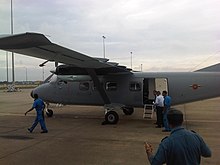
1980s and 1990s
Rapid growth began in the mid-1980s, when the Sri Lankan Civil War against Tamil separatists drew the service into a major, long-term security role. In 1982 the SLAF reactivated airfields at Batticaloa, Anuradhapura, Koggala and Sigiriya that had been disused since World War II, all later becoming SLAF Stations. During the First Eelam War between 1983 and 1987, the force grew by nearly 50 percent.
As in the other services, a shortage of spare parts plagued maintenance efforts, forcing the service to send a number of aircraft to Singapore and elsewhere for repairs. After the purchase of equipment from Canada in 1986, the air force gained the capability to make structural repairs on its fleet of Bell helicopters, several of which had been damaged in operations against the Tamil separatists. Maintenance of electronic equipment was performed at the communications station at Ekala, in the north of Colombo District.
After the 1983 riots, the government worked rapidly to expand the SLAF inventory, relying largely on sources in Italy, Britain, and the United States. Because of tight budget constraints, the SLAF was compelled to refit a number of non-combat aircraft for military uses in counter-terrorism operations against Liberation Tigers of Tamil Eelam (LTTE) terrorists. From the period 1983 to 1985, the Air Force acquired 11 Bell 212 helicopters, four Bell 412 helicopters, three SIAI Marchetti SF.260s, two Cessna 337s, one Hawker Siddeley HS 748 and two Beechcraft Super King Airs. By 1985, nine more Bell 212s were added to the fleet, along with four Bell 412s. The 412s along with the SIAI Marchetti SF.260 aircraft advanced the attack capabilities of the SLAF. Central in the government's security efforts were six SIAI Marchetti SF.260TP turboprops which were used for rocket attacks and strafing. Additionally, the air force, with the help of Heli Orient of Singapore, equipped twelve Bell 212 and Bell 412 helicopters to serve as gunships and as transport vehicles for highly successful commando assault operations. The air force had a fleet of approximately eighty aircraft, of which sixty-four were reported to be operational in early 1988.
Government forces reportedly also used helicopters on bombing missions. A more effective bombing capability was provided by a small fleet of Chinese Harbin Y-12 turboprop transport aircraft. These were equipped with bomb racks that had been fitted to carry up to 1,000 kilograms of fragmentation and anti-personnel bombs. Transport, training, and surveying functions were carried out by a variety of Cessna and de Havilland aircraft. In 1987 during the Vadamarachchi Operation the air force mustered one HS 748, two Y-12s and one de Havilland Heron, all configured as improvised bombers. In 1987 the air force acquired Shaanxi Y-8s and would later use them for bombing, until 1992 when one Y-8 crashed during a bombing mission, when all bombing using transport aircraft were stopped.
On 3 September 1987 a Women's Wing was formed and located in Colombo. The first CO was Air Cdre D.S.G. Vithana. The Women's Wing was set up to maintain and update all records pertaining to female officers and airwomen, prepare promotional schedules, annual assessments, issue identity cards, etc.
In order to increase its attack capability, in 1991 the SLAF acquired four F-7 Skybolts, three FT-7s and two Shenyang J-5s from China. Later in 1993 the first of three Mil Mi-17 helicopter transports were acquired along with four FMA IA 58 Pucarás for ground attack. These proved to be effective, but three of the Pucarás were lost, two to surface-to-air missiles launched by the LTTE. The sole remaining Pucará was retired in 1999 due to lack of spare parts. In 1995 Mil Mi-24 gunships were acquired for close air support for the army and by 2001 Mil Mi-35s were added to the fleet.
In 1996 the SLAF acquired seven IAI Kfirs (six C.2s and one TC.2) from Israel and a further nine of these aircraft had been added to the inventory by 2005. This included four C.2s and four C.7s in 2001. Currently the SLAF operates two C.7s, eight C.2s and two TC.2s. The SLAF used these Kfirs to launch attacks against Tamil separatist targets in rebel-controlled areas of the island.
2000–2010


In 2000 new aircraft were acquired; apart from the addition of Kfir C.7s and Mi-35s, these included six Mikoyan MiG-27 dedicated ground attack aircraft (obtained due to lack of specialised ground attack aircraft since the retirement of the Pucarás), a Mikoyan-Gurevich MiG-23UB trainer and two Lockheed C-130 Hercules for heavy transport. Six K-8 Karakorum trainers were soon bought from China, creating No. 14 Squadron to train pilots for the newly expanded fleet of jets.
On 24 July 2001, thirteen aircraft including two Kfir jet fighters, one Mi-24 helicopter gunship and one MiG-27 jet fighter, were destroyed in the pre-dawn attack by the LTTE on SLAF Katunayake air base, part of Bandaranaike International Airport about 35 km. north of Colombo. Three military training aircraft and five civilian jets were also among the destroyed aircraft. Many of these aircraft were later replaced. Sri Lanka's international airport has remained on alert for a repeat of the 2001 attack, with severe restrictions on the number of people allowed into the terminal buildings. Huge walls were built around the terminals and the control towers to prevent impact from car bomb attacks, and many sentries were placed along the approach roads to the facility. All airports including the international airport are heavily guarded by members of the SLAF Regiment. In 2006 four MiG-27s were bought from Ukraine to replace two lost in crashes and the one lost in the attack on the airport.
Since the start of the civil war the SLAF used its combat aircraft in a ground-attack role to attack LTTE targets in the then LTTE-controlled areas in the northern and eastern parts of the island. Following confirmation that the LTTE was using several light weight aircraft in 2006, the SLAF expanded its air defense capabilities which had been neglected for years. Extensive air defense radar network was established and ground based air defense strengthened. Airborne interception of the LTTE light aircraft were developed using both fixed wing and rotary wing aircraft until dedicated interceptors were acquired.
During the 2007–2009 the LTTE launched several attacks using light aircraft on Colombo, SLAF Katunayake and several other locations with superficial damage. In the early hours of October 22, 2007 a ground attack by the LTTE on SLAF Anuradhapura at Saliyapura, which was supported briefly by its air wing, resulted in the destruction of eight aircraft with several others damaged. The attack only affected the SLAF's training element. Early in 2008 the air force received six F-7Gs, these are primarily used as interceptors and are attached to No.5 Jet Squadron.
In October 2008 the air force claimed its first air-to-air kill, when it reported that one of its Chengdu F-7G interceptors shot down a Zlín Z 43 of the LTTE air wing when it attempted to attack a military base in Vavuniya. In the last stages of civil war the SLAF flew its highest number of sorties providing close air support of ground and naval forces and carried out pinpoint bombing on identified targets. It moved many of its units including fighter jets to forward air bases to increase the number of sorties.

Post war
By 2009 SLAF operated three FT-7, three F-7BS, six F-7G, two Kfir TC.2s, two Kfir C.7s, eight Kfir C.2s, seven MiG-27s and one MiG-23UB trainer. Following the end of the civil war the number of sorties flown were reduced.
In 2011 it grounded its Kfir of the No. 10 Fighter Squadron following a mid-air collision that resulted in the loss of two Kfirs. On 13 February 2012, one MiG-27 crashed while on a training mission, the pilot ejected. On 12 December 2014, an Antonov An-32 of the No. 2 Heavy Transport Squadron crashed whilst on a routine flight.
In December, SLAF C-130 of the No. 2 Heavy Transport Squadron flew a special humanitarian operation transporting essential spares and accessories for repair of the desalination facility in Male from Singapore. The breakdown of the desalination facility resulted in a desperate shortage of drinking water in Male and the equipment for repair could not be flown in commercial flights, resulting in the Maldivian government requesting aid from the government of Sri Lanka.
In April 2015, following the earthquake in Nepal the Sri Lankan government responded in deploying relief contingent from the armed services including teams form the air force, these teams where air lifted to Nepal by a SLAF C-130 of the No. 2 Heavy Transport Squadron, which was followed by other flights carrying in aid supplies. This was the first time a SLAF aircraft has been deployed on a rescue mission to a foreign country.
Major combat operations
The Air Force has supported the Sri Lanka Army in all major operations undertaken by them;
|
|
|
Organisation
| Sri Lanka Air Force |
|---|
 |
| Components |
| General Information |
| History |
| Aircraft |
| Leadership and ranks |
| This section needs to be updated. Please help update this article to reflect recent events or newly available information. (February 2014) |
Air Force Headquarters
The professional head of the air force is the Commander of the Air Force, as of 2016 Air Marshal Kapila Jayampathy who reports directly to the Minister of Defence. The Commander of the Air Force exercises operational and administrative control of the air force from air force headquarters, SLAF Colombo.

- Board of Directors
The Board of Directors numbers 13;
- Chief of Staff - Air Vice Marshal DLS Dias
- Director Air Operations -Air Vice Marshal DLS Dias
- Director Ground Operations-Air Vice Marshal Kishan Yahampath psc USP
- Director Aeronautical Engineering -Air Vice Marshal Lokugan Hewage Ajantha Silva
USP, BSc (Gen), fndu(China)]]
- Director General Engineering Air Vice Marshal A Wijesiri BSc psc
- Director Electronics and Telecommunications Engineering -Air Vice Marshal Janak Wanigatunga
- Director Logistics - Air Vice Marshal Sumangala Dias
- Director Administration - Air Vice Marshal Chandana Welikala
- Director Civil Engineering Air Commodore Ruchira Samarasinghe USP, BSc
- Director Health Services Air Commodore (Dr) Lalith Jayaweera USP,MBBS (SL), MSc (D&SS), D AV Med (USA), psc
- Director Training Air Vice Marshal AMD Zoysa
- Director Welfare Air Vice MarshalKFR Fernando
Commands
Zonal Commands
The air force has four commands known as zonal commands, each under the control of an air officer for command and administrative control. The zonal commands control all flying squadrons, aircraft and air defences; zonal Commanders are responsible for air and ground operations that have been decided upon by the Directorate of Operations at Air Force HQ.
- Four Zonal Commands
- Eastern Zonal Command
- Northern Zonal Command
- Southern Zonal Command
- Western Zonal Command
Air Defense Command
Sri Lanka Air Force no 3 Air defence radar squadron using 4 Indian made Indra Mark II 2D Radar Systems and also Sri Lanka air force has Chinese JY-11 low/medium altitude 3D surveillance radars and CETC YLC-18 3D Radar. The Sri Lanka Air Defence Command, based at SLAF Katunayake, is the SLAF command responsible for coordination of air and ground units to maintain integrated national air defence. National Air Defence System's main radar station situated at the Pidurutalagala tallest mountain in Sri Lanka, at 2,524 m (8,281 ft).
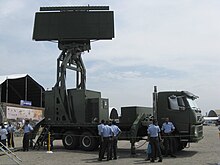
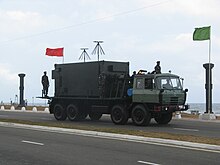
Flying Squadrons
Main article: List of Sri Lankan Air Force aircraft squadrons- No. 1 Flying Training Wing
- No. 2 Heavy Transport Squadron
- No. 4 (VIP) Helicopter Squadron
- No. 5 Jet Squadron
- No. 6 Helicopter Squadron
- No. 7 Helicopter Squadron
- No. 8 Light Transport Squadron
- No. 9 Attack Helicopter Squadron
- No. 10 Fighter Squadron
- No. 12 Squadron
- No. 14 Squadron
- No. 111 Air Surveillance Squadron
- No. 112 Air Surveillance Squadron
Branches and Trades
- General Duties Pilot Branch – Pilots and Navigators (commissioned officers)
- Administrative Branch – Administrative Officers, Human Resource managements and associated trades are involved with training management, physical education, catering, infrastructure management, accounts, dress and discipline, personnel and recruitment. Also includes;
- Legal Branch
- SLAF Band
- Operations Air Branch – Fighter Controllers and Air Traffic Controllers, Radar Observes control SLAF aircraft from the ground as well as combat ground units and Air defense.
- Electronic Engineering Branch – Tech Signals Officers/Engineers and technical staff Manage Maintains Communication systems, Navigational aids, Radar, Electronic warfare, Telecommunication infrastructure & IT includes Air Signallers, As an Electronics Engineers coordinate and manage Airborne Radar, Voice and Data transmission and reception equipment mounted on aircraft, weapon delivery navigation systems, ground base and air defense automation.
- Aero Engineering Branch – Engineering Officers Aircraft Engineers and Aircraft technicians are employed to maintain and repair the Aircraft, Airframe, Power plant, Avionics equipment used by the SLAF. Aircraft Technician maintain, test, Inspection of Airframe, Aero Engine, Aero Electrical, Flight instruments, Aviation Safety, Quality assurance, Ground base and Air Weaponry systems, Non-destructive test.
- Logistic -Supply chain managements, Equipment Branch, Aviation Fuel, Air Cargo, Air Movements - MOVCON, Inventories, Receiving & Inspection.
- Airfield Construction Branch -Civil Engineering, Mechanical, Electrical, Power transmission and Infrastructure Managements
- Operations Ground – Officers and Gunners; it has infantry, paratrooper and light armored units to protect against ground attack and defend against air attack with ground-to-air defense units, explosive ordnance disposal EOD
- SLAF Regiment Special Force – The elite special forces unit of the SLAF.
- Air Force Police – Military police of the SLAF and are located wherever the SLAF is located.
- SLAF Women's Wing.
- Medical Branch - Aviation medicinespecialists, medical officers, nurses, paramedics
Aircraft
Current inventory
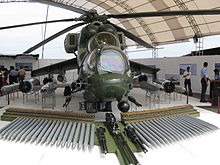

| Aircraft | Origin | Type | Variant | In service | Notes | |
|---|---|---|---|---|---|---|
| Combat Aircraft | ||||||
| IAI Kfir | Israel | multirole | 1 | |||
| Maritime Patrol | ||||||
| Super King Air | United States | maritime patrol | 200 | 2 | ||
| Transport | ||||||
| Antonov An-32 | Ukraine | transport | 2 | |||
| Harbin Y-12 | China | transport | 9 | |||
| C-130 Hercules | United States | tactical transport | C-130K | 2 | ||
| Helicopters | ||||||
| Bell 206 | United States | utility / liaison | 4 | |||
| Bell 212 | United States | MEDEVAC / utility | 10 | |||
| Bell 412 | United States | VIP / utility | 412EP | 3 | ||
| Mil Mi-17 | Russia | utility | Mi-17/171 | 15 | ||
| Mil Mi-24 | Russia | attack | Mi-24/35 | 9 | ||
| Trainer Aircraft | ||||||
| Chengdu J-7 | People's Republic of China | jet trainer | FT-7 | 1 | license- built version of the MiG 21 | |
| Hongdu JL-8 | China | jet trainer | K-8 | 5 | ||
Future equipment
- Immediate procurement plans
According to the June 2009 issue of Airforces Monthly, two Harbin Y-12 IV transports with weather radar are being procured as existing Y-5s lack this capability. An additional Beechcraft Super King Air is also being procured as well as two additional CJ-6 training aircraft; currently only two are operational. Further Mil Mi-17 and Mi-24 helicopters are also being procured in a recent deal with Russia. According to the July 2009 edition of Airforces Monthly, four Mi-17 helicopters have been purchased although the numbers of Mi-24 being bought was not disclosed. Six MA60 transport aircraft are also being procured from China.
Recently two additional Bell 412 have been purchased by the air force in addition to the 8 already in service. In addition 14 Mi-171 helicopters are to be purchased from Russia.
According to unconfirmed reports Sri Lanka is said to have ordered 20 HAL Light Combat Helicopter from India.
- Long-term procurement plans
Since 2007, the Sri Lanka Air Force has been planning to increase its interceptor capability with the acquisition of Mikoyan MiG-29s from Russia. It also hopes to expand its maritime patrols with long-range aircraft suited for the purpose, and re-establish No. 3 Maritime Squadron.
Also according to the June 2009 issue of Airforces Monthly the aging MiG-27s and Kfirs may also be retired in the near future with the winding down of combat operations. The favoured replacement will be the MiG-29; despite rumours none have yet been inducted into the air force. The air force is also looking at procurement of a dedicated maritime patrol aircraft.
However, with the end of the civil war, the SLAF as changed its priorities and has set a long-term goal of modernizing its aircraft and developing its air defense capability. It has developed its own R&D program to develop UAVs and plan on replacing its fighter aircraft. There have been claims that SLAF is looking at PAC JF-17 Thunder as a replacement for its Kfirs and MiG-27s.
In 2013 Pakistan offered the JF-17 aircraft to several countries including Sri Lanka Unconfirmed reports in June 2015 state that Sri Lanka placed an order for a squadron of JF-17.In October 2015 several reports claimed that India offered Sri Lanka its HAL Tejas aircraft against the Pakistani JF-17. On January 5, 2016, several newspapers reported that an agreement was signed with Pakistan for the supply of 8 JF-17s to be delivered by end of 2017. This was followed by a clarification by the Sri Lankan government that no such deal had been discussed or signed and dismissed the news reports as mere speculation.
In mid 2016 Sri Lankan Government gives green light to a programme to procure multirole combat aircraft. The programme, featuring the acquisition of between 8-12 aircraft, will be pursued through an government-government basic agreement. In December 2016 Sri Lanka Prime minister Ranil Wickramasinghe said Sri Lanka received offers from China, India, Sweden and Russia and they are still in progress to take final decision.
Current deployments
As of present, most of the Sri Lankan Air Force is deployed for domestic defensive and combat operations, while a limited foreign deployment is maintained.
Domestic
Due to the Sri Lankan Civil War the air force has been on a constant mobilised (including reservist) state since the 1980s (except for a brief period from 2002–2005).
- Air & ground operations are carried out from 20 bases around the country which includes 6 air bases with resident squadrons, 8 forward operational airfields, 4 ground stations and 2 SLAF Regiment detachments.
- Security of the Katunayake International Airport is maintained by the SLAF Regiment.
- Ground based air defence of vital infrastructure are carried out by the SLAF Regiment.
Foreign
- Since 2004 the air force personal have been attached to Sri Lankan contingent to the United Nations Stabilization Mission in Haiti MINUSTH, minustah.un.org.
- The Sri Lanka Air Force deployed an aviation unit under the United Nations Mission in the Central African Republic and Chad, with a flight of three Mi-17 helicopters from the No. 6 Helicopter Squadron along with 122 personnel consisting pilots, engineers and other supporting staff.
- Sri Lanka Air Force deployed its second aviation unit under United Nations Mission in South Sudan. The deployment consists fleet of three Mi-17 Helicopters from the SLAF along with 104 personnel consisting pilots, engineers and other supporting staff.
Training

Under the guidance of the British Royal Air Force, flight training was first offered to Royal Ceylon Air Force pilots at RAF Negombo, an RAF air base at Katunayake, in 1952. In addition, a number of cadet officers received flight training at the Royal Air Force College in Cranwell, England. After the British withdrew from their military facilities in Sri Lanka in 1967, No. 1 Squadron (Flight Training School) was established at SLAF China Bay in Trincomalee. With the increase in Tamil separatist activities in the mid-1980s, the air force stepped up its training activities, bringing in foreign pilots to assist in the helicopter training program.
General Sir John Kotelawala Defence University (KDU) formed in 1981 and situated in Ratmalana, fourteen kilometers south of Colombo, is Sri Lanka's only university specialising in defense studies. Each year, approximately fifty cadets from all three services are admitted to the university (aged 18–22) to participate in a three-year program of academic work and basic training.
Senior officers of the ranks of Squadron Leader and Wing Commander are given advanced training and education at the Defence Services Command and Staff College (DSCSC) at Batalanda, Makola which was established in 1997 as the Army Command and Staff College or at the SLAF Junior Command & Staff College at SLAF China Bay in Trincomalee.
Basic officer training is carried out at the Air Force Academy at SLAF China Bay in Trincomalee. The academy offers a two-year program of basic flight training and a variety of specialised courses. Pilot training was carried out at SLAF Anuradhapura by No. 1 Flying Training Wing using Cessna 150s for basic training and Nanchang CJ-6 (PT-6) aircraft for intermediate training. This has since been moved to SLAF China Bay. Advanced jet training is carried out by No. 14 Squadron in K-8 Karakorums also based at SLAF China Bay. Specialised training for different types of aircraft is carried out by the respective Squadrons; this includes F-7 Skybolt, Kfir TC.2 and MiG-23UB aircraft used for this purpose by No. 5 Jet Squadron, No. 10 Fighter Squadron and No. 12 Squadron respectively at SLAF Katunayake. For training of transport pilots, Harbin Y-12s of No. 8 Light Transport Squadron are used; Bell 206s are used for helicopter training.
Initial Ground Combat Training for both officers and other ranks of both regular and volunteer forces, are carried out separately at SLAF Diyatalawa in the garrison town of Diyatalawa, it also conducts advanced training for SLAF regiment officer cadets. Following training at SLAF Diyatalawa, general duties (pilot) branch officer cadets are sent to the Air Force Academy for flight training, and airmen and airwomen are sent to Advanced & Specialized Trade Training School for specialised training in different trades. Air traffic controllers receive schooling at special facilities in Colombo as well as officer cadets from other branches. In addition, approximately twenty-five officers a year receive advanced training abroad, most commonly in Britain, Indian Air Force and, in recent years, at the United States Air Force Academy.
- Training establishments
- Air Force Academy – SLAF China Bay
- SLAF Junior Command & Staff College – SLAF China Bay
- Training Wing – SLAF Diyatalawa - Ground combat Recruit course
- Advanced & Specialized Trade Training School | A&STTS – SLAF Ekala. Aircraft Technician, Fixed wing and Rotary wing- Airframe & Powerplant, Aviation Electronics, Safety.
- Combat Training School – SLAF China Bay
- NCO Management School – SLAF China Bay Supervisory and Management
- Basic Trade Training School – SLAF Katunayake. Non-technical administrative, IT training and basic Technical staff
- Regimental Training Centre – SLAF Ampara Combat and EOD
- Gunner Training School – SLAF Palaly Instructors
- Training Squadrons
SLAF Regiment



The Sri Lanka Air Force Regiment is a ground combat corps within the Sri Lanka Air Force, responsible for capturing and defending airfields and associated installations. Effectively, its members are the SLAF's soldiers. SLAF Regiment is responsible for protecting all its air bases and installations using infantry and light armored units. Ground based air defense of vital military and civil installations is carried out by this Regiment.
SLAF Regiment Special Force
Main article: Sri Lanka Air Force Regiment Special ForceRegiment Special Force is an elite Special Forces unit of the Sri Lanka Air Force, part of the SLAF Regiment. It provides highly effective land-based defence and beyond-forward-defence-line assault capabilities.
Air Force Police
Air Force Police (AFP) is responsible for maintaining discipline and enforcement of law and order within the SLAF and its establishments. Members of the AFP are distinguished by their white-topped caps and red 'AFP' flashes on the sleeve of their uniforms.
Sri Lanka Air Force Helitours
Main article: HelitoursThe Sri Lanka Air Force has launched domestic flight routes to provide a service to the people traveling to Jaffna in the north, Trincomalee in the north east, and to Seegiriya. As the SLAF is not a commercial organization this aviation service was mainly built up as a non-profit public service. Helitours has been in operation since 1983 but due to the civil war operations were restricted. The SLAF is once again launching frequent flights and besides Helitours, it is also operating charter flights to give the people a further choice and reliable service.
Currently Harbin Y-12 fixed-wing aircraft are being used for passenger transportation. An Antonov An-32 will also be in operation in the near future to provide more capacity along with six Xian MA60s. All the charter flights are commenced from Ratmalana Air Force Base.
Sri Lanka Air Force museum
The Sri Lanka Air Force museum is the only national museum dedicated entirely to aviation and the history of the Sri Lanka Air Force. The museum was first established in 1993 as the Aircraft Preservation and Storage Unit at Air Force Base Ratmalana and was reopened on 5 November 2009 after redevelopment. The museum consists of historic aircraft, vehicles, uniforms and weapons. The museum premises are divided into sections; main hangar, outdoor exhibits and hangar numbers 1, 2 and 3.
Personnel
Parama Weera Vibhushanaya recipients
The Parama Weera Vibhushanaya is the highest award for valour awarded in the Sri Lankan armed forces. Air Force recipients include;
Notable fallen members
Over 23,790 Sri Lankan armed forces personnel were killed since beginning of the civil war in 1981 to its end in 2009, this includes air officers killed in active duty. 659 service personnel were killed due to the second JVP insurrection from 1987 to 1990. 53 service personnel were killed and 323 were wounded in the first JVP insurrection from 1971 to 1972. Notable fallen members includes;
- Air Commodore Shirantha Goonatilake † – Commanding Officer, No. 1 Flying Training Wing
- Group Captain D. S. Wickramasinghe † – Senior Staff Officer, Directorate of Aeronautical Engineering
- Group Captain Roger Weerasinghe † – Zonal Commander, Northern Zone
- Group Captain Jagath Rodrigo † – Commanding Officer, No. 9 Attack Helicopter Squadron
- Wing Commander Thilina Kaluarachchi † – Officer Commanding Operations, No. 9 Attack Helicopter Squadron
Women in the Sri Lanka Air Force
See: Sri Lanka Air Force Women's Wing
The first female officers to join the air force were in 1972, to the Volunteer Air Force, today women are recruited to both the regular and volunteer forces as both officers and airwomen to the SLAF Women's Wing. However, there are no female pilots in the air force. Although female officers are not able to join the general duties pilot branch, they can join any other branch, including the SLAF Regiment and the Air Force Police.
Gallery
- Sri lanka Air Force
-
 SLAF Mil Mi-24.
SLAF Mil Mi-24.
-
 SLAF IAI Kfir.
SLAF IAI Kfir.
-
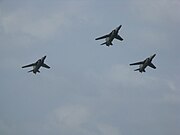 MiG-27M.
MiG-27M.
-
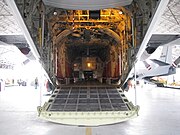 SLAF C130.
SLAF C130.
-
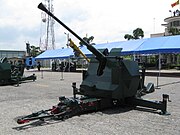 SLAF Anti Aircraft Gun.
SLAF Anti Aircraft Gun.
-
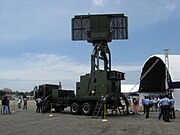 CETC YLC-18 3D Radar.
CETC YLC-18 3D Radar.
-
 EMIT Blue Horizon II on Victory Day Parade.
EMIT Blue Horizon II on Victory Day Parade.
-
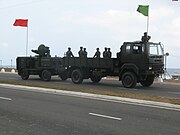 SLAF Mobile Radar System.
SLAF Mobile Radar System.
-
SLAF Indra-I radar.
-
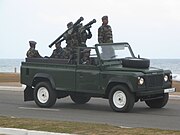 Igla (SA-18) Surface-To-Air Missile Unit.
Igla (SA-18) Surface-To-Air Missile Unit.
See also
- Commander of the Sri Lanka Air Force
- Military ranks and insignia of the Sri Lanka Air Force
- Sri Lanka Air Force Regiment
- Sri Lanka Air Force Regiment Special Force
- SLAF Museum
- Sri Lankan Civil War
- Suicide Air Raid on Colombo
References
- ^ Sri Lanka Air Force Official website
- "Commands - India/FE - Including Space Commands and MMO Information.htm". Archived from the original on 6 August 2008. Retrieved 6 February 2015.
{{cite web}}: Unknown parameter|deadurl=ignored (|url-status=suggested) (help) - The Night of April 5th Archived 2009-02-09 at the Wayback Machine
- Air Attack Archived 2009-02-08 at the Wayback Machine
- ^ Helitours Archived 2008-01-18 at the Wayback Machine
- The roar of Jets once again
- Old Wings New Wings
- MI-24 Joined SLAF
- Of Kfirs and UAVs 60th Anniversary | Sri Lanka Air Force
- TamilNet. "TamilNet: 24.07.01 Tension after dawn raid". Retrieved 6 February 2015.
- Ministry of Defence, Sri Lanka Archived 2014-10-12 at the Wayback Machine
- DefenceNet. "DefenceNet: Defence News from Sri Lanka". Retrieved 6 February 2015.
- "Sri Lanka, 9 - 9 - 2008: Tamil rebels' aircraft shot down, says Sri Lanka Air Force". Retrieved 6 February 2015.
- MIG 27-Inside Story, Ministry of Defence, Sri Lanka
- "Sri Lanka : Sri Lanka Air Force MIG-27 crashes". 13 February 2012. Retrieved 6 February 2015.
- "Plane crash in Athurugiriya". Daily Mirror. 12 December 2014. Retrieved 12 December 2014.
- The Government of Sri Lanka vehemently condemns the terrorist attack in Peshawar
- "Sri Lanka to send emergency relief to Nepal". 25 April 2015.
- Air Force crippling LTTE with precise, effective air strikes – Commander
- "Situation Report". Retrieved 6 February 2015.
- ^ "World Air Forces 2017". Flightglobal Insight. 2017. Retrieved 3 March 2017.
- "Two Bell 412s delivered to Sri Lanka". colombopage.com. 2015. Retrieved 9 June 2015.
- "Sri Lanka : Sri Lanka Air Force to acquire two new Bell-412 helicopters". 2 August 2011. Retrieved 6 February 2015.
- "HugeDomains.com - Rotorpad.com is for Sale (Rotorpad)". Retrieved 6 February 2015.
{{cite web}}: Cite uses generic title (help) - "Post-war Sri Lanka buys 14 military choppers from Russia". Reuters. 17 August 2011.
- "HAL LCH (Light Combat Helicopter) - Light Attack Helicopter - History, Specs and Pictures - Military Aircraft". Retrieved 6 February 2015.
- "Global Defence News and Defence Headlines - IHS Jane's 360". Retrieved 6 February 2015.
- "The Island-News". Retrieved 6 February 2015.
- "Account Suspended". Retrieved 6 February 2015.
- Iftikhar A. Khan, "PAF gets six JF-17 Thunder aircraft", DAWN News internet edition, published 15 March 2008, URL to archive: http://archives.dawn.com/2008/03/15/top8.htm Retrieved 16 February 2011
- Stuck in Sichuan: Pakistani JF-17 Program Grounded? No, Defense Industry Daily, 9 March 2009 , retrieved July 2009
{{citation}}: Check date values in:|accessdate=(help) - "Pakistan to sell JF-17 fighter jets to SL-report ::: Dailymirror.lk ::: Breaking News". Archived from the original on 29 June 2014. Retrieved 6 February 2015.
{{cite web}}: Unknown parameter|deadurl=ignored (|url-status=suggested) (help) - "India Offers Tejas LCA Against Pakistani JF-17 Fighter For Sri Lankan MiG Replacement". www.defenseworld.net. Retrieved 2015-10-26.
- "Pakistan to sell 8 JF-17 Thunder fighter jets to Sri Lanka, inks eight agreements - The Economic Times". The Economic Times. Retrieved 2016-01-05.
- "India criticises Sri Lanka for purchase of JF-17s from Pakistan - Pakistan | Dunya News". dunyanews.tv. Retrieved 2016-01-05.
- "Sri Lanka prepares to launch combat aircraft procurement program". http://www.janes.com. Retrieved 2017-02-09.
{{cite web}}: External link in|website= - "Sri Lanka to buy Chinese Xian Y20 military-cum-civil transport planes". http://www.newindianexpress.com. Retrieved 2017-02-09.
{{cite web}}: External link in|website= - Haiti – MINUSTAH – Facts and Figures Archived 2007-08-15 at the Wayback Machine
- "Hiru News". Retrieved 7 June 2015.
- training
- www.airforce.lk
- "Inaugural flight to Jaffna tomorrow". Retrieved 2009-09-21.
- "Victory's price: 6,200 Sri Lankan troops". News.smh.com.au. 22 May 2009. Retrieved 30 May 2009.
- "The Sunday Times - Special Assignment". Retrieved 6 February 2015.
- Heroes who made the supreme sacrifice Archived 2007-09-30 at the Wayback Machine
Further reading
- TENNEKOON, E. V., & DE SILVA, M. (1994). The History of the Sri Lanka Air Force. Colombo, Commander, Sri Lanka Air Force. ISBN 955-9256-00-9
External links
- Ministry of Defence Sri Lanka
- Sri Lanka Air Force
- General Sir John Kotelawala Defence Academy
- Chronological Listing of Ceylonese / Sri-Lankan Flight Ejections
- The Former Far East Air Force
- CYBER BALUMGALA: LTTE Aircraft shot down by SLAF
- Defending the Nation from dizzy heights
| Leadership | |||||||||||||||||
|---|---|---|---|---|---|---|---|---|---|---|---|---|---|---|---|---|---|
| Organisation |
| ||||||||||||||||
| Ranks and insignia | |||||||||||||||||
| List of air forces | |
|---|---|
|



